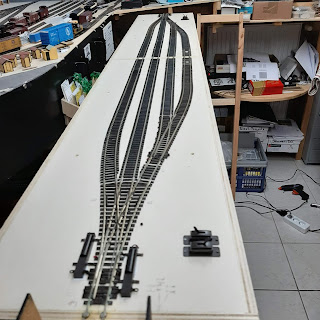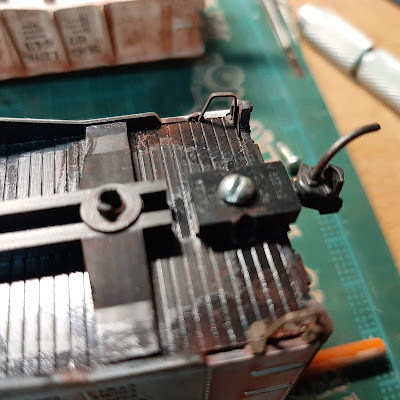Standing grass is a very realistic scenic feature on every train layout or diorama. Unless you are really building large layouts professionally, you don't need one of these expensive tools which quickly cost in the 100 Euro range. That's my opinion and the bucks saved can be invested into more models. So, if you want to know how to save money without missing the opportunity of having good looking grass on your layout, keep on reading. I'll show you in a couple of steps how to do it.
There are multiple designs of electric fly swatters, so it doesn't matter which one you choose. The blade will be removed anyway. The electronics inside is always the same. Look for a model where the two halves are screwed together. Otherwise you will destroy the handle.
The fly-swatter consists of a handle to which the swatter is attached with a couple of screws. When unscrewing the two halves the swatter may be detached from the handle. A small electronic board provides the high voltage needed. I detached the two wires and discarded the swatter.
The biggest problem consisted in finding a plastic sieve with a metal mesh. Any other metal sieve would also work, but then the danger of accidentally touching the sieve and getting an electric shock would be higher.
I shortened and drilled two holes in the handle to fit over the two pins that held the swatter before. This could be different, depending on what swatter you have. A bit of improvisation is advisable.
I soldered one of the wires to the mesh.
Then I lengthened the other lead with a clamp on one end. This is the ground wire, which will be clamped to a screw or nail inserted into the scenery.
To avoid using batteries, I soldered two wires to the battery contacts to power the unit with a external power pack.
I bought a 3V / 1 Amp power supply for less than 3 Euros and connected it to the wire using a male and female plug.
My power cord is about 2 meters long, which is enough to move around freely.
I attach the ground clamp to a screw, inserted in the center of my workspace, where I want to plant my static grass.
The advantage over an applicator with a pot is that you may reach lower areas easily.
Nevertheless I could not resist to buy one of the cheaper offerings with a large pot and two different styles of mesh. This one makes applying longer static grass easier. Next I will change it to external power also.
The small sieve is ideal for the short 2mm fibers
Here is an example of static grass applied to seaweed for bushes and in tree making.
My first attempts with static grass application.
DISCLAIMER: Be aware that this electric device may cause an electric shock. If you build it, you use it under your own responsibility.


















































